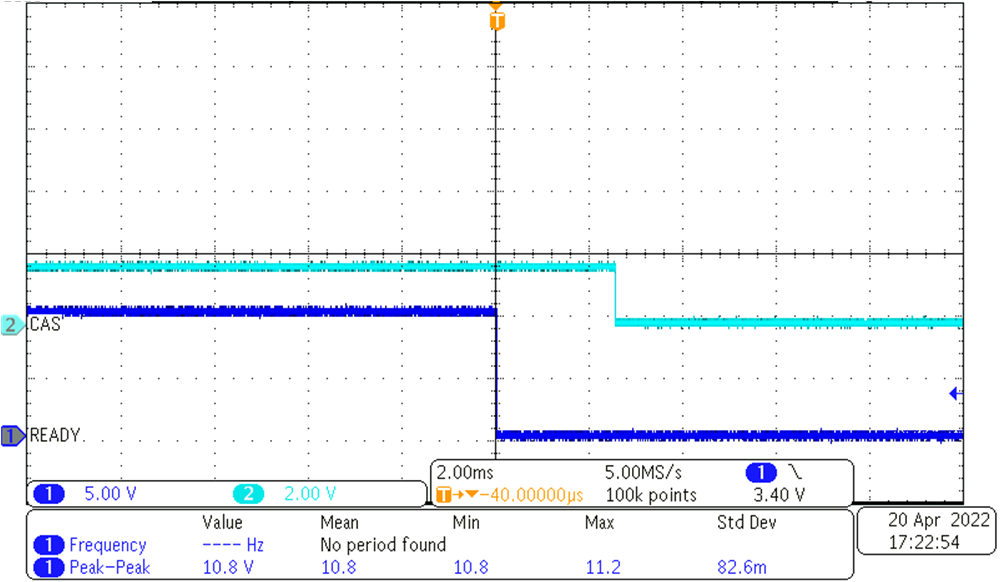TIDUF13 November 2022 ADS117L11 , ADS127L11
- Description
- Resources
- Features
- Applications
- 5
- 1System Description
- 2System Overview
- 3System Design Theory
- 4Hardware, Software, Testing, and Test Results
- 5Design and Documentation Support
- 6About the Author
4.4.7 Fault Detection Circuit
Sweeping the input voltage results in the following thresholds for a fault-detection circuit:
- 0.5 V is the short detection threshold
- 20.1 V is the open detection threshold
The input signal stepped down from 10 V to 0 V, and the output of the short detection comparator is probed. The plot in Figure 4-19 shows a delay of 1.5 ms until the comparator output goes low.
 Figure 4-19 Time-Domain Plot of Fault
Detection Circuit Delay
Figure 4-19 Time-Domain Plot of Fault
Detection Circuit Delay